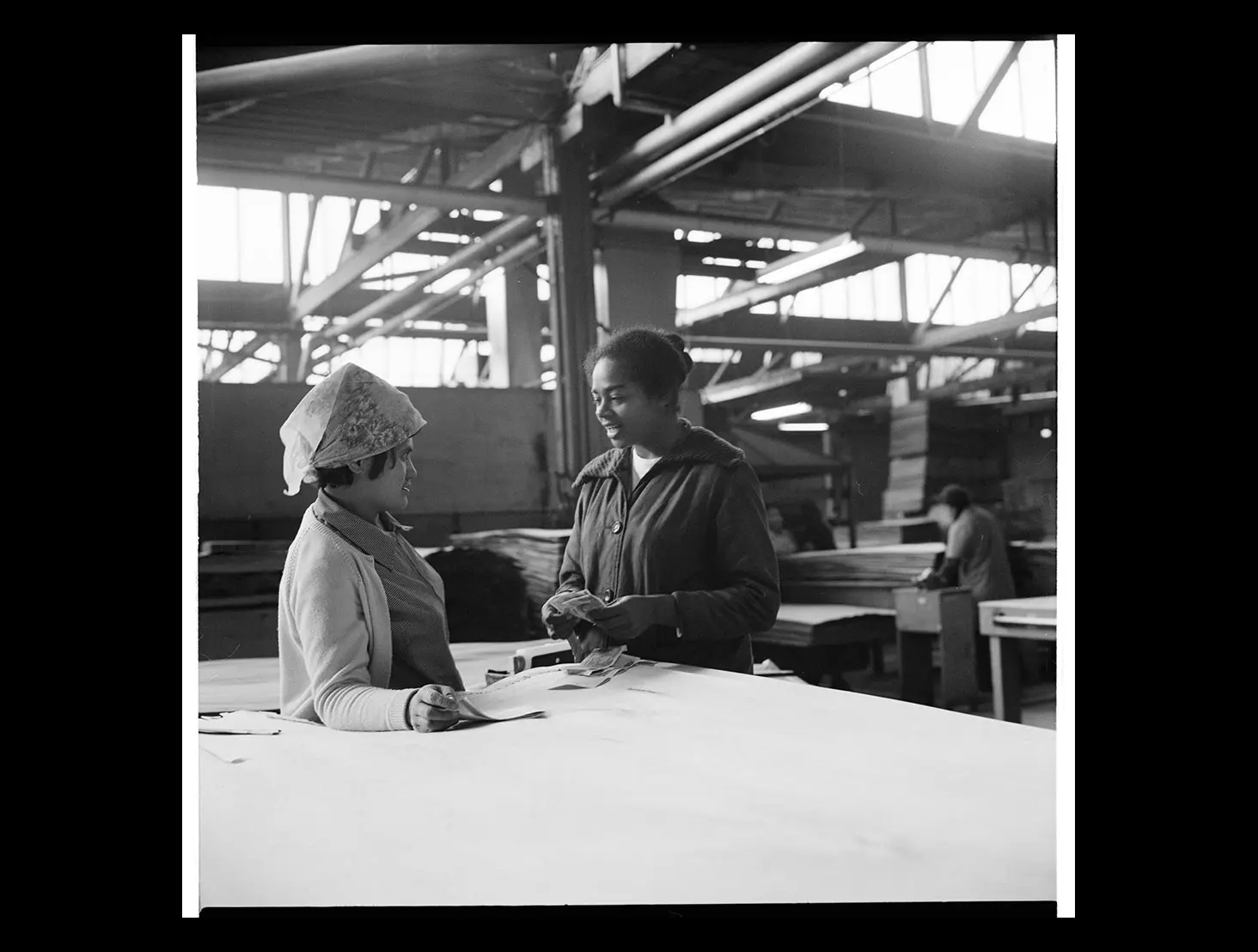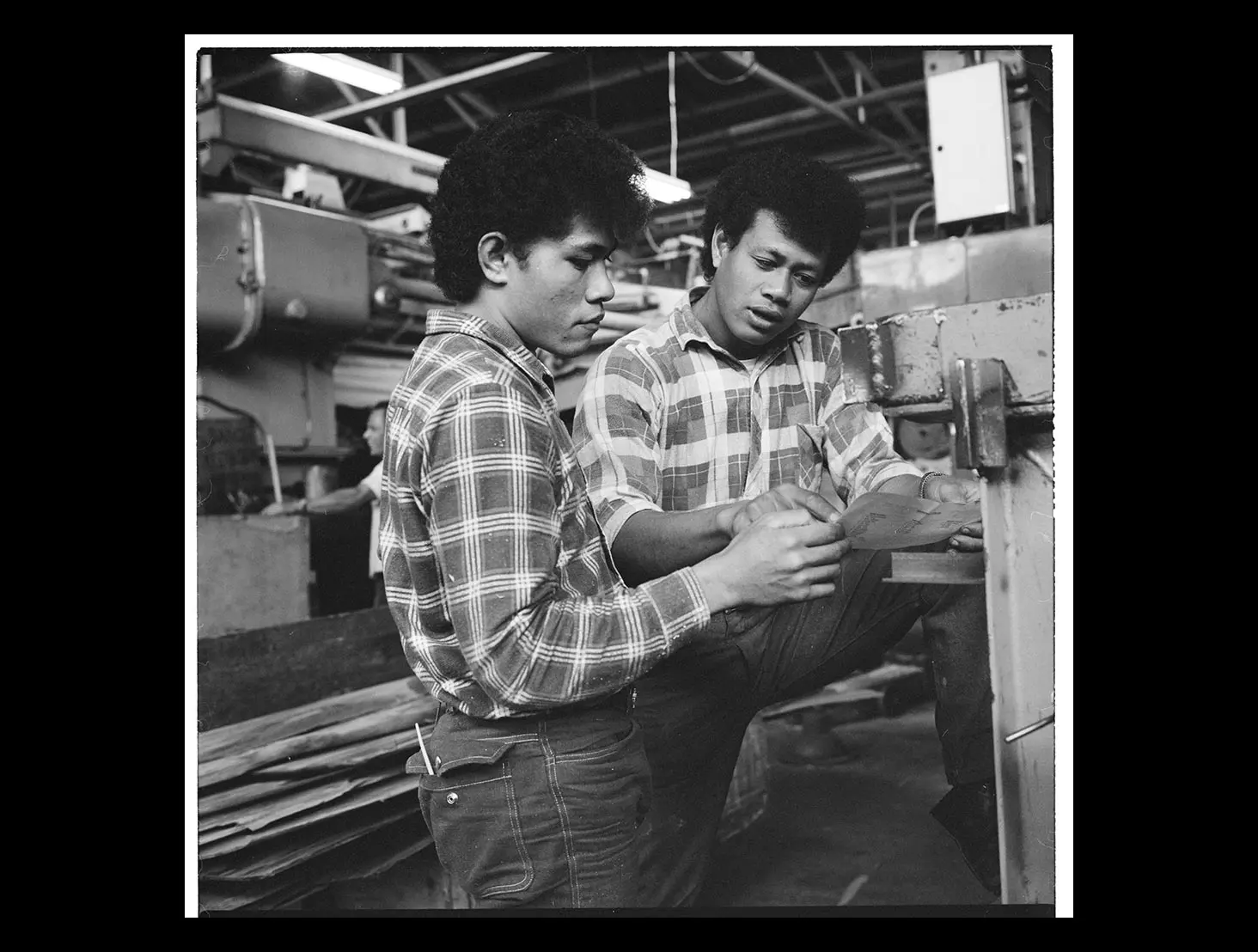Image credit: Pacific Island workers at a plywood factory, Auckland, 1971 by Ans Westra. Ref: AW-0500_11 Alexander Turnbull Library.

Image credit: Pacific Island workers at a plywood factory, Auckland, 1971 by Ans Westra. Ref: AW-0500_11 Alexander Turnbull Library.

After WW2 ended, the Aotearoa NZ economy flourished and demand for workers in trades and factories was high. Since then, thousands of Pacific peoples have come to Aotearoa to live and work. Find out more, and explore our collections and curated resources.
‘I scored a job at the factory aye … yeah … mean money.’ The words of Alexo in the 2018 Cougar Boys video Things Islanders Say echo the factors that lured Pacific Islanders to Aotearoa 50 to 60 years earlier.
These photographs, taken in 1971 at a plywood factory in Auckland, signify an important part of New Zealand’s history with its Pacific neighbours. After the Second World War, the New Zealand economy picked up pace and began to flourish. More and more jobs were being created and there was a shortage of people to fill them. Employers needed workers to meet that demand, and where better to advertise the dream of opportunity than with their Pacific neighbours?
The people of the Cook Islands, Tokelau and Niue were already New Zealand nationals, and could come here as of right. But for people in Sāmoa, Tonga and Fiji, this was a welcome opening. Whole families packed their bags and boarded boats to get here, leaving behind loved ones in their search of a better future. New Zealand was the biblical ‘land of milk and honey’, a place where you could earn money to send back home to help with kaveinga or fa‘alavelave (family obligations), building a house for the family, or paying for school fees so that your children or siblings could get an education.
In my family, on my father’s side, Nimilote Finau — Uncle Nimi — from Faleloa, Ha‘apai, in Tonga came to Wellington in the 1960s to help his mother and siblings back home after his father died. He studied hard and got into the building industry, then began bringing his other family members over for work. When the visas for one lot expired, they returned home and Uncle Nimi brought over another lot. Later, he was able to bring over his mother, his siblings and their families, and his in-laws, and he then extended that help to his village and whoever in the Tongan community needed it — all done with love and support to make New Zealand a home.
In Oscar Kightley’s film Dawn Raid (2021), one Samoan migrant comments on how a week’s pay could help not only his immediate family but also his extended family. That was how ‘mean money’ was back in those days. ‘Mean money’, as Kightley says in the film, ‘to do the dirty jobs, the factory work, the cleaning.’ And for those whose visas had expired, a blind eye was turned — as long as the economy was booming.
Story written by: Suliana Vea
Copyright: Turnbull Endowment Trust
Image credit: Pacific Island workers at a plywood factory, Auckland, 1971 by Ans Westra. Ref: AW-0500_03 Alexander Turnbull Library.

Read connected stories from Te Kupenga:
Explore these Alexander Turnbull Library research guides:
Topic Explorer has:
The Pacific: Culture, history and geography — see the story ‘Pacific island people in Aotearoa New Zealand’
Many Answers has Dawn raids (New Zealand).
Want to share, print or reuse one of our images? Read the guidelines for reusing Alexander Turnbull Library images.
Tikanga ā-iwi:
Te whakaritenga pāpori me te ahurea
Te ao hurihuri
Ngā mahinga ohaoha.
Te Takanga o Te Wā (ngā hītori o Aotearoa):
Whakapapa
Whanaungatanga.
Social sciences concepts:
Identity, culture, and organisation
Continuity and change
The economic world.
Aotearoa New Zealand’s histories:
Colonisation and its consequences
The exercise of power.